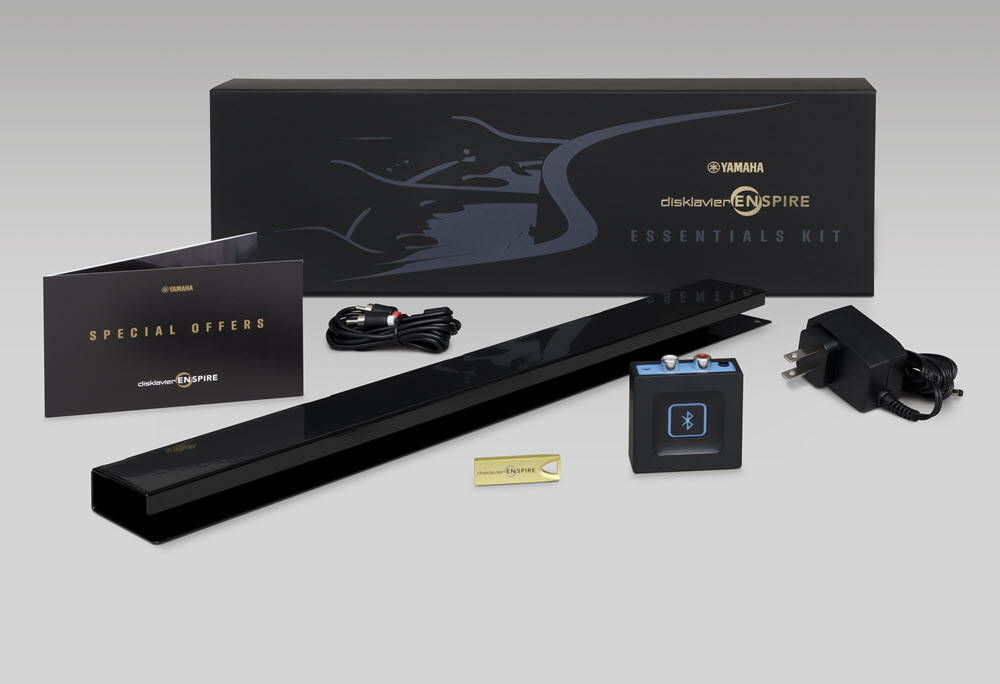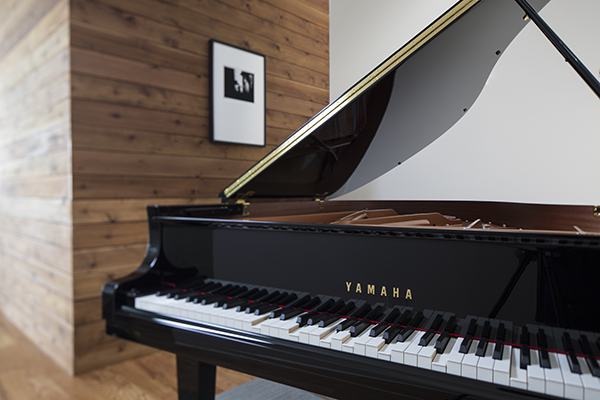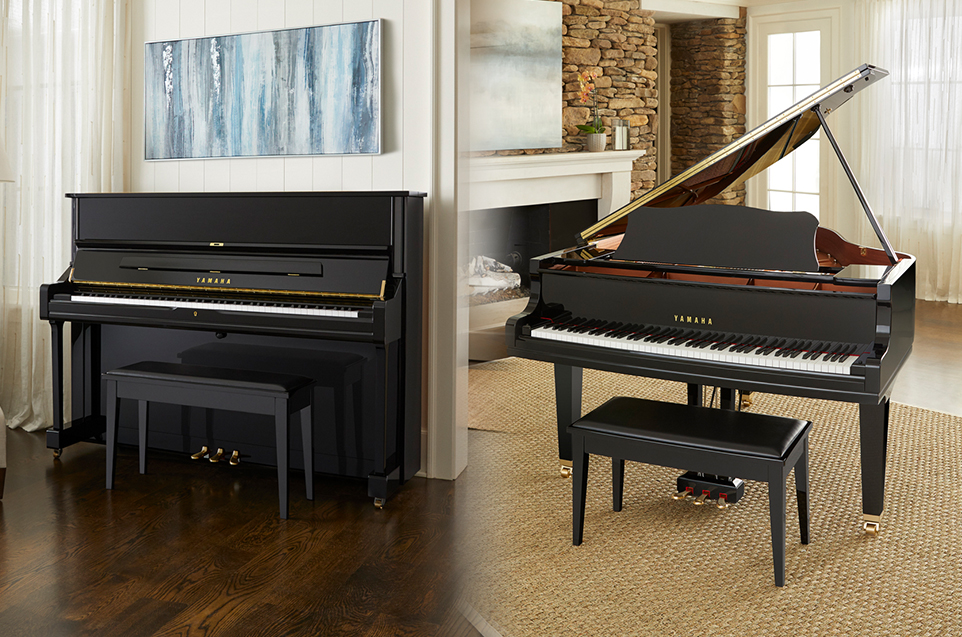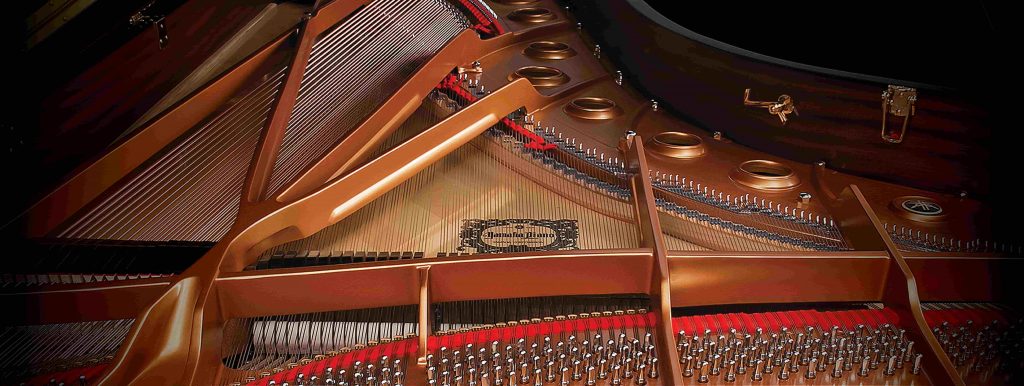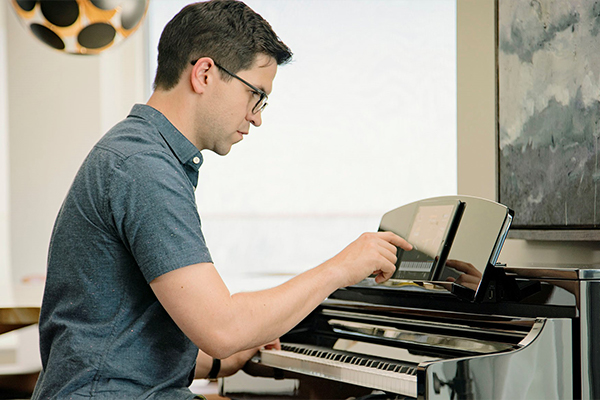How to Prepare for a Virtual Piano Audition
Tips for creating compelling videos of your performances.
Even as restrictions ease for students and schools, video auditions continue to provide a convenient and efficient way to audition for conservatories as well as festivals and competitions (at least in preliminary rounds). Luckily, technology has evolved to the point where pianists no longer need expensive equipment to create compelling video material.
For many young players — especially those who have never known a world without YouTube — creating a video of their performance will seem like just another day at the keyboard. But for others, the idea of recording a video can be intimidating. In this article, we’ll provide tips for preparing that all-important virtual piano audition.
Sound Is Key
Although visual elements of a video are important, you are first and foremost a musician, so capturing your authentic sound should be a priority. To that end:
- Record on the best piano you can access, and make sure it has been tuned. If you don’t own a great piano, consider asking a piano store, school or place of worship for access to their instrument. Consider offering to barter something like a free community performance in exchange. If you find a suitable piano that is out of tune, maybe offer to pay for the tuning.
- Prepare the acoustics of the recording space. Capturing the sound of a piano is notoriously complex. Once keys are depressed and strings are struck, the sounds swirl around the case and bounce off the lid to create the piano’s unique sonority. Then those same sounds bounce around every other surface in the room … and not always in ways that are pleasing to the ear. To capture the cleanest, richest sound from your piano, you’ll need to dampen any unwanted echoes in your room with soft curtains, rugs or pillows.
- Record with a microphone that is up to the task. Even though smartphones and tablets can record good-quality audio if the room is well prepared, for the best sonic results, you should consider using an external microphone instead. You’ll need one that is designed for capturing music, not video conferencing, since the latter specifically eliminate some frequencies to make speech sound clearer.
- Eliminate ambient sounds. No matter where you are recording, there’s always the possibility that outside traffic, appliances, pets or other ambient sounds can make your recording seem less than professional. Choose a time of day when these are less likely to be a problem.
Spark Joy with Your Visual Space
You want to be remembered for your dazzling double-thirds, not your messy bookshelf! Keep the visual background simple so it doesn’t distract from your performance.
- Remove as much as possible from the frame. Ideally, the piano should be in front of a solid-colored wall or curtain with no other visible furniture or décor. If you need to hide something unsightly, put a green plant in front of it.
- Use a curtain on a tall frame for a backdrop. A basic frame (like those used for green-screens) with a tasteful solid-colored curtain is an inexpensive way to hide a cluttered room. Just make sure the curtain frame is completely outside the view of the camera.
- Make the piano the center of the shot. Piano judges will want to see the full keyboard and your pedals. An ideal way to get everything you need into the shot is to set the camera on a tripod just barely behind your right shoulder a few feet away and at just above the height of your head.
- Use good lighting. To best demonstrate your graceful scales and commanding octaves, record in full daylight or in a bright space that does not put glare on the keys. Sometimes pointing a light at the ceiling helps diffuse shadows or glare.
Prepare Yourself
This involves logistics as well as mental and physical preparation.
- Practice, practice, practice. Make test videos well before you need to record the actual submission. Knowing that you’ve set things up for a good recording and feeling comfortable in front of the camera will work to greatly reduce your stress levels.
- Dress for the occasion. Depending on the event or type of audition, you may or may not be expected to dress in formal attire. If not, the best rule of thumb is to dress the same way you would if you were auditioning in person.
- Consider inviting a small audience. If you’re the kind of performer whose playing gains energy from a live audience, invite some encouraging friends to listen as you record. Even one or two engaged faces can make a big difference in how you communicate musically.
Other Tips
- Trim excess from the video. It’s okay to leave a little pause before and after a performance, but for the cleanest look, everything else should be trimmed away. Not only is it more professional, but the judges will appreciate not having to sit through those extra moments of non-playing time.
- Keep overlays simple. It might be useful (or even requested) to insert subtitles with info about your repertoire, but don’t clutter the recording with flashy transitions or video effects.
- Be yourself! Smile graciously at the camera, take a deep breath, and play your heart out. You’ll demonstrate to the listeners that they are seeing a living, breathing musician, even though they’re not in the same room with you.
What If I Have a Piano With SILENT™ Technology?
Many current Yamaha hybrid pianos, including Disklavier, SILENT Piano™ and TransAcoustic™ models, include an option for silent performance and internal audio recording. With this feature, regardless of the sound or tuning status of the acoustic piano, you are always able to create a recording with the sound of a perfectly tuned 9′ concert grand, without any ambient sound.
If you want to prepare an audition with this technology, you have two options:
- Connect the piano’s audio output to your video recorder’s input (or use an audio interface for recording to a computer, tablet or smartphone), or
- Capture the audio with an external microphone or the built-in mic in your smartphone and use a simple video editor like iMovie or Filmora to replace it afterwards with the audio recorded internally in the piano.
Taking this concept even further, some auditions even employ the Disklavier Video Sync feature to host auditions in which performances are fully reproduced on a Disklavier piano (yes, even the keys and pedals are moving, exactly as they were played!) along with synchronized video. (Check out this blog posting for more information.)
Check out these related blog articles:
Remote Auditions Are Now Reality
Click here for more information about the Yamaha Disklavier.
Click here for more information about Yamaha SILENT Pianos.
Click here for more information about the Yamaha TransAcoustic Pianos.










